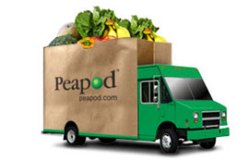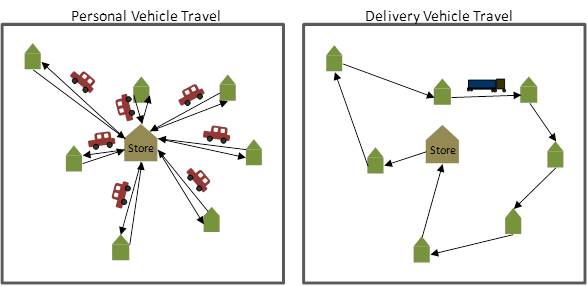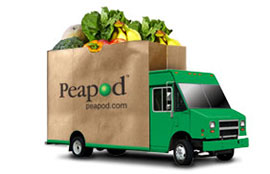
Peapod Be lazy, be green.
Do you drive to the grocery store? That’s not very green, nobody needs to tell you that. New research suggests you could halve the carbon footprint of your shopping just by putting your feet up and getting your groceries delivered to your door.
That’s according to calculations by University of Washington engineers. They point out in a paper published in the Transportation Research Forum journal [PDF] that delivery trucks follow efficient routes as they drop off groceries at customers’ homes.
Consider the following diagrams:

University of Washington Click to embiggen.
From a university press release:
“A lot of times people think they have to inconvenience themselves to be greener, and that actually isn’t the case here,” said Anne Goodchild, UW associate professor of civil and environmental engineering. “From an environmental perspective, grocery delivery services overwhelmingly can provide emissions reductions.”
Consumers have increasingly more grocery delivery services to choose from. AmazonFresh operates in the Seattle area, while Safeway’s service is offered in many U.S. cities. FreshDirect delivers to residences and offices in the New York City area. Last month, Google unveiled a shopping delivery service experiment in the San Francisco Bay Area, and UW alumni recently launched the grocery service Geniusdelivery in Seattle. …
Emissions reductions were seen across both the densest parts and more suburban areas of Seattle. This suggests that grocery delivery in rural areas could lower carbon dioxide production quite dramatically.
“We tend to think of grocery delivery services as benefiting urban areas, but they have really significant potential to offset the environmental impacts of personal shopping in rural areas as well,” Wygonik said.
Just another excuse to give the car a rest, really.



